Shaving requires a lot of gear – at least if you want to do it the right way. You will need a brush, a mug, a mirror, and maybe even a styptic pencil. And all that stuff makes a mess on the vanity… unless you got one of the patented all in one shaving mugs invented by Bernard Goodfellow Savage and Albert Cecil Lawless Loughran, that is.
Granted, their stated goal is a little less ambitious. To quote from the patent:
The object of the invention is to provide shaving-mug with a mirror which will virtually constitute an auxiliary bottom for the I5 mug when the mirror is not in use, the attachment between the mirror and mug being such that when the mirror is removed the mug will be completely closed at its bottom and will have a suitable base upon which to stand.
So all they wanted was a way to attach a mirror to a shaving mug – or any other mug. Although… I am less sure if my coffee mug needs a mirror?
The all in one shaving mug is well described in the patent as well as in the accompanying drawing.

The patent drawing for US patent 573,240.
Working our way from the bottom and up, we first have a small round mirror in a frame. The frame is threaded and screws onto the bottom of the mug. It also have a small, folding stand on the bottom, so you wouldn’t have to prop the mirror against something while shaving.
The mug itself is looking fairly normal. Apart from the screw threads on the bottom and top, that is. Judging by the drawing, it is right-sized to hold a puck of soap. Because unlike many modern wetshavers, our forefathers only had one shaving soap and they kept it in their shaving mug.
A cover can be screwed into the upper threads. In the cover there is a hole – also threaded – which you can screw a shaving brush into. Although the patent points out that having the brush being a friction fit works better.
In the handle of the brush there is a hollow space, normally closed by a plug. The plug, the patent states, can hold a stick of cosmetics or like material. TO my mind, the obvious choice would be a styptic pencil.
All in all the all in one shaving mug should be, in the words of the patent, a
(…) mug or cup is of exceedingly simple, durable, and economic construction, and is capable of being packed in a convenient and safe manner, the contents of the cup and the brush at that time being thoroughly protected. The mirror in no manner interferes with the design or the usefulness of the cup or mug, and the brush may be conveniently and expeditiously disconnected from the cover and the cover from the body of the mug or cup when the latter is to be used.
I see two problems with the invention, one of which can be worked around, and the others the inventors probably saw too.
The first problem is that unless you let the brush and soap dry, you would be sealing in the water when you closed up the all in one mug. The solution is, unsurprisingly, to let things dry before packing up.
The second would be the try to get the knot trough a narrow threaded hole without badly messing up the bristles. I suspect this is why the inventors suggested using a friction fit instead of threads.
Apart from those two issues, I see no trouble with the invention as such. The all in one shaving mug keeps most of your shave gear in one spot – and I am sure a hole through the handle could be arranged to hold your razor too. For someone with just one soap and one brush, and not a large bathroom, this could be a workable solution today – just as it was a hundred and twenty eight years ago.
You can read the full patent for the all in one shaving mug at Google Patents.























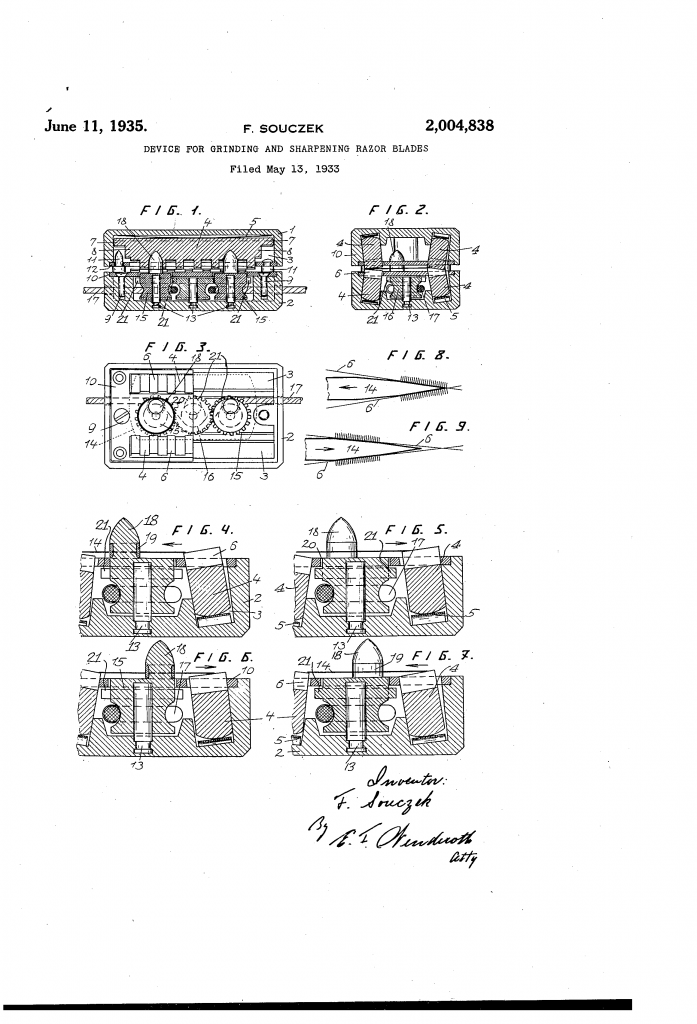


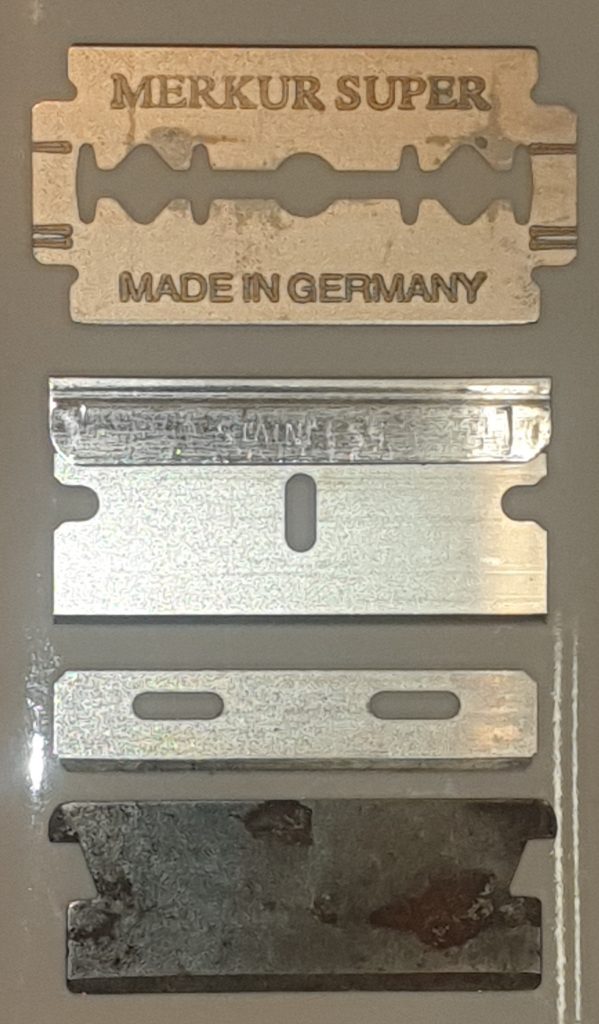
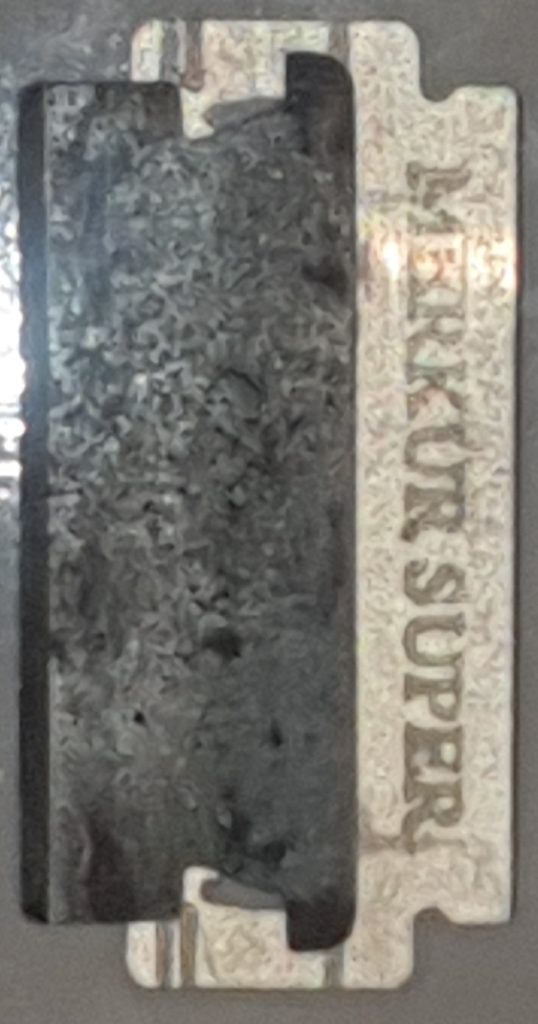
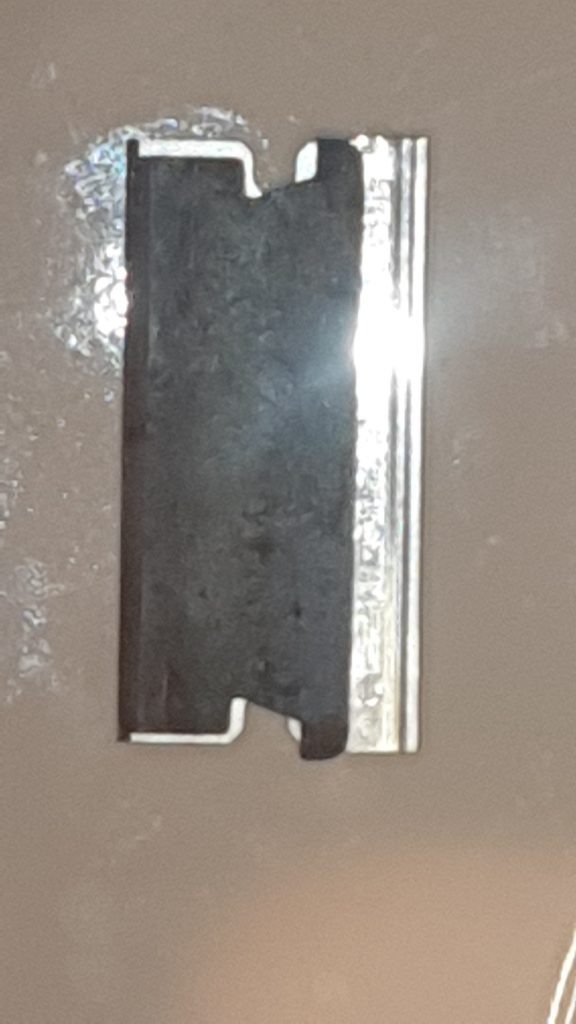
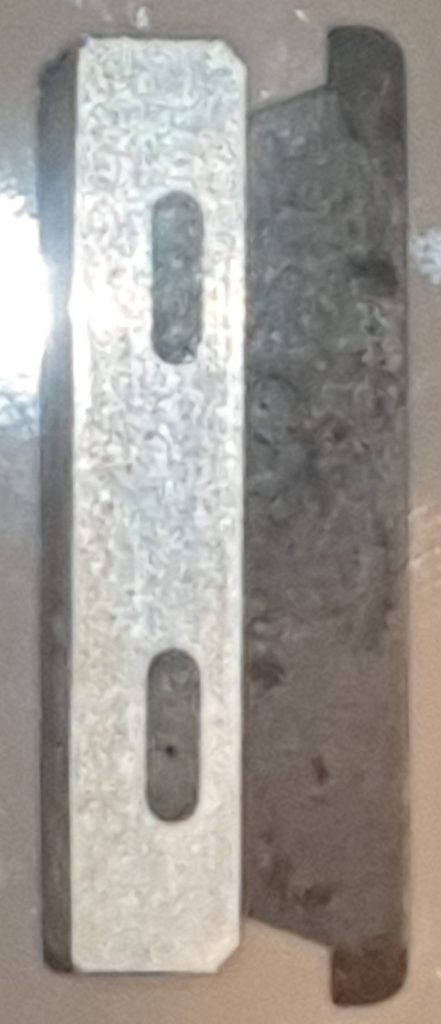
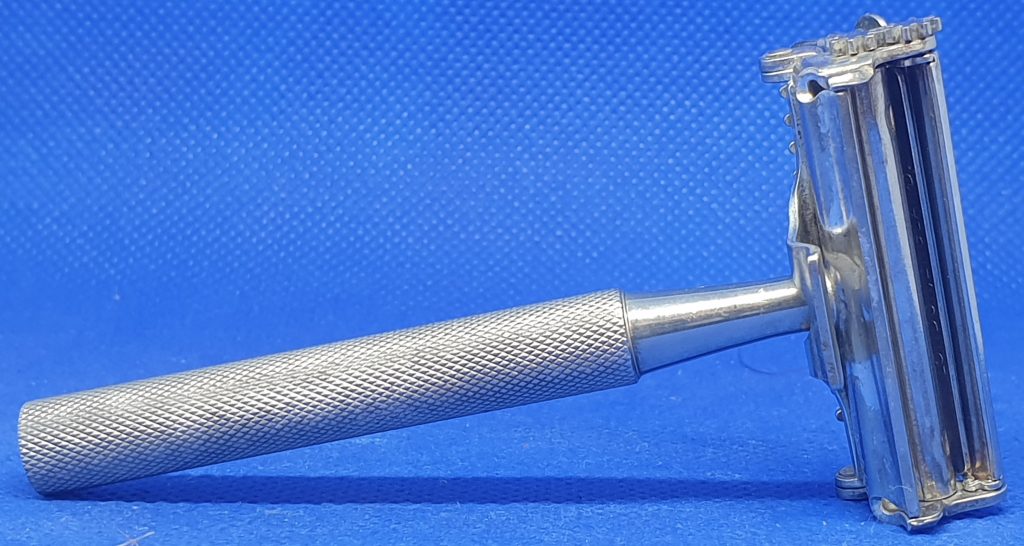
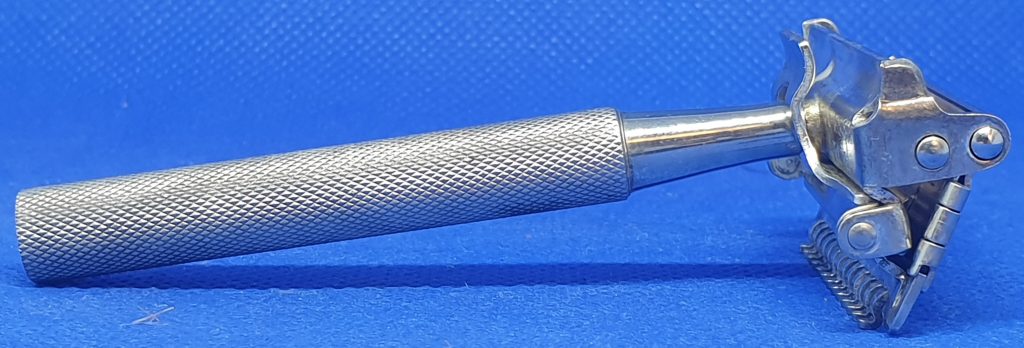
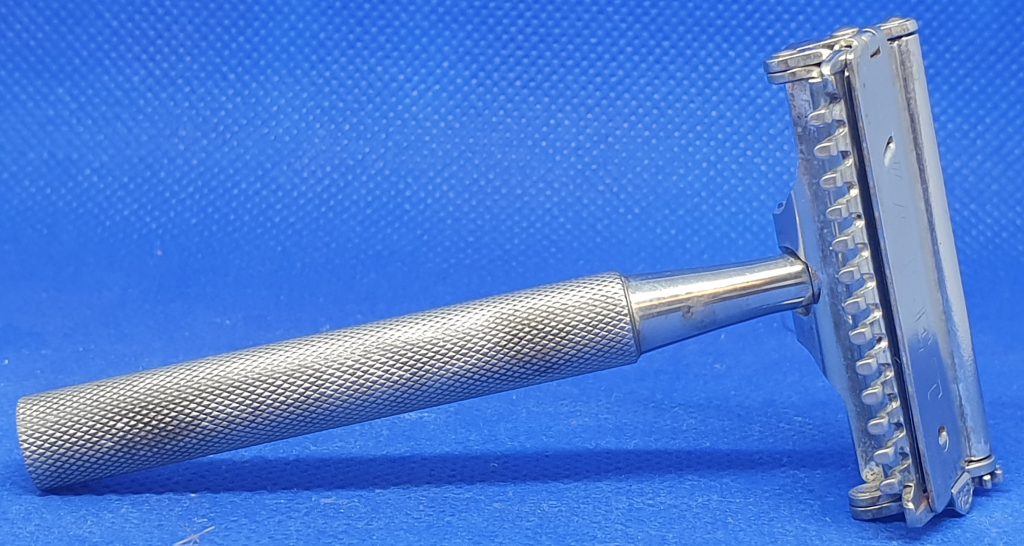
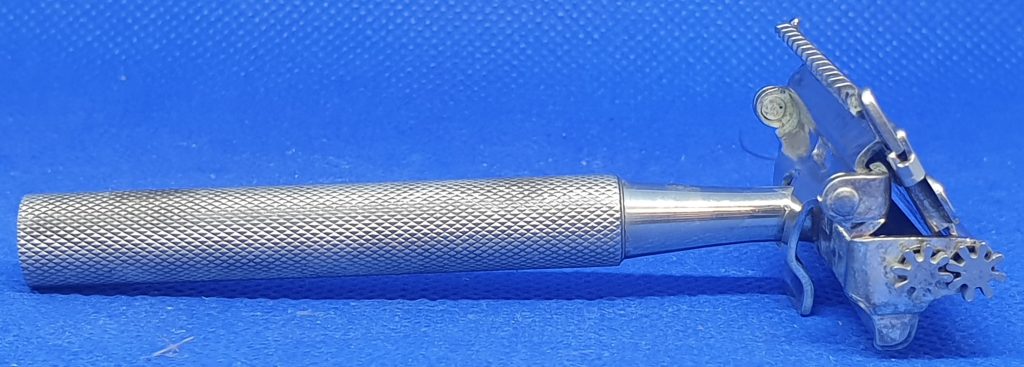
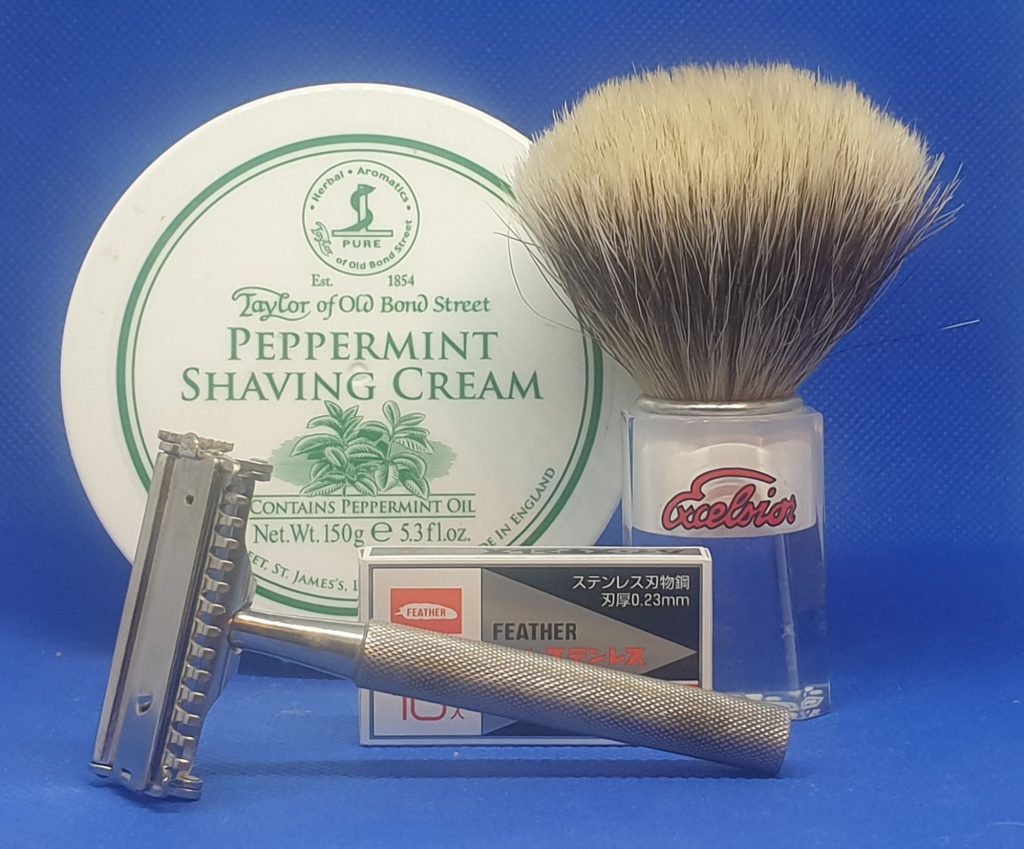
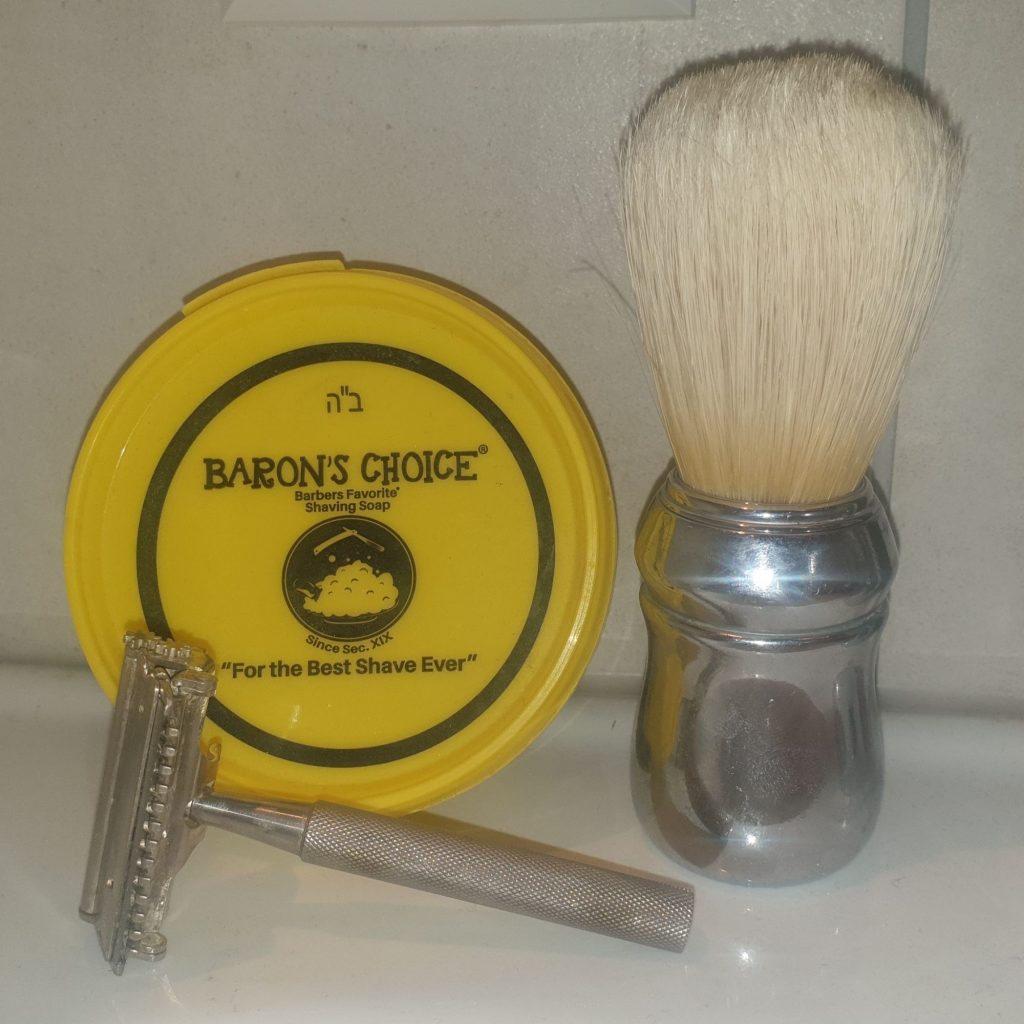

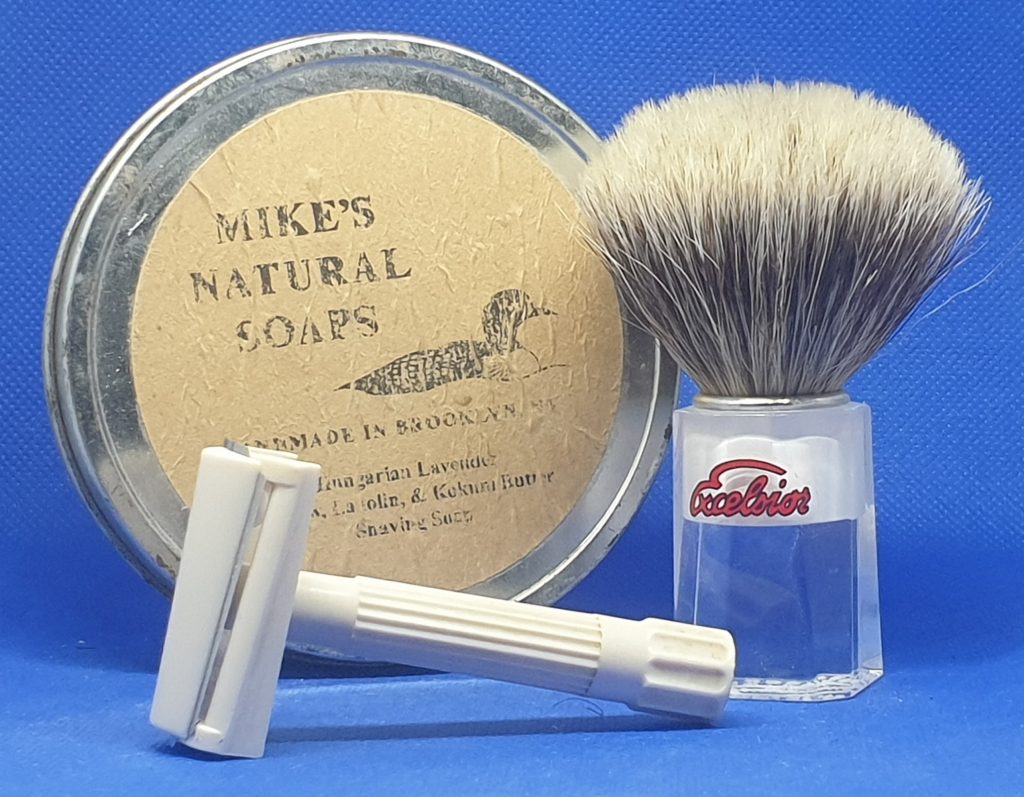
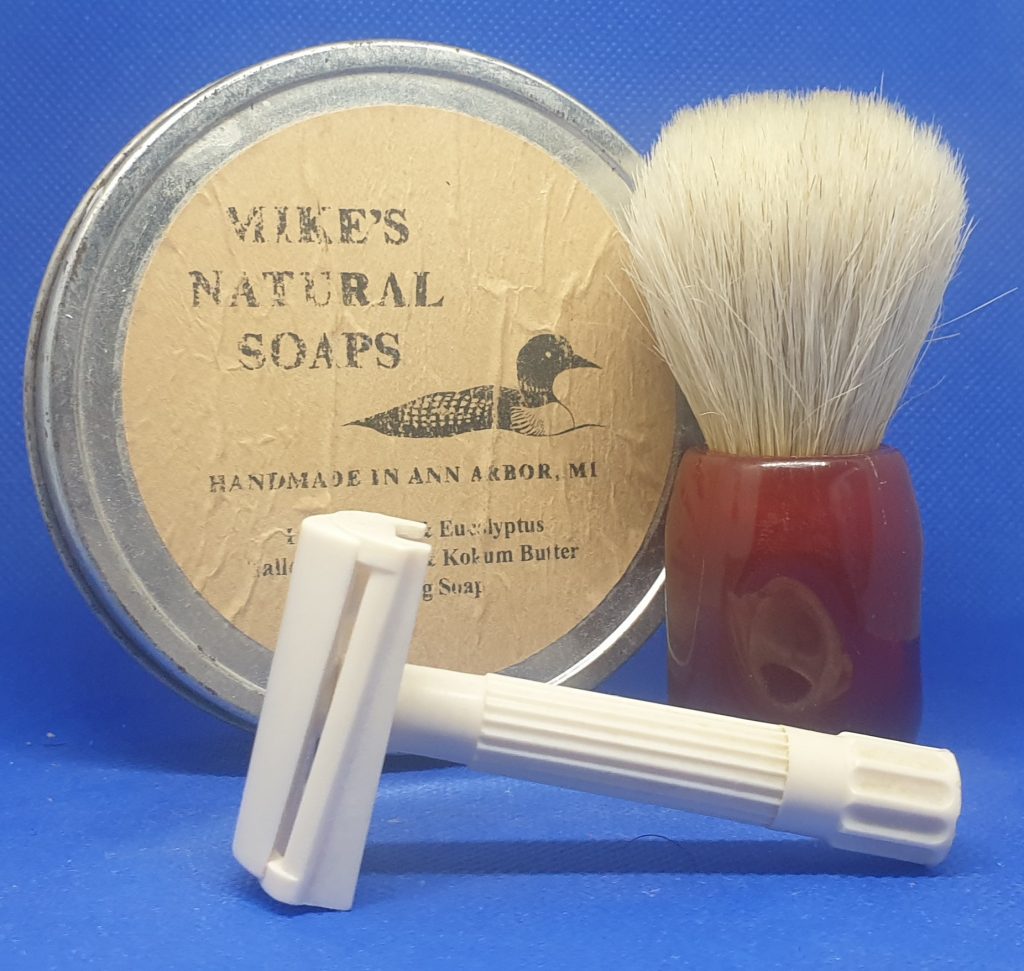
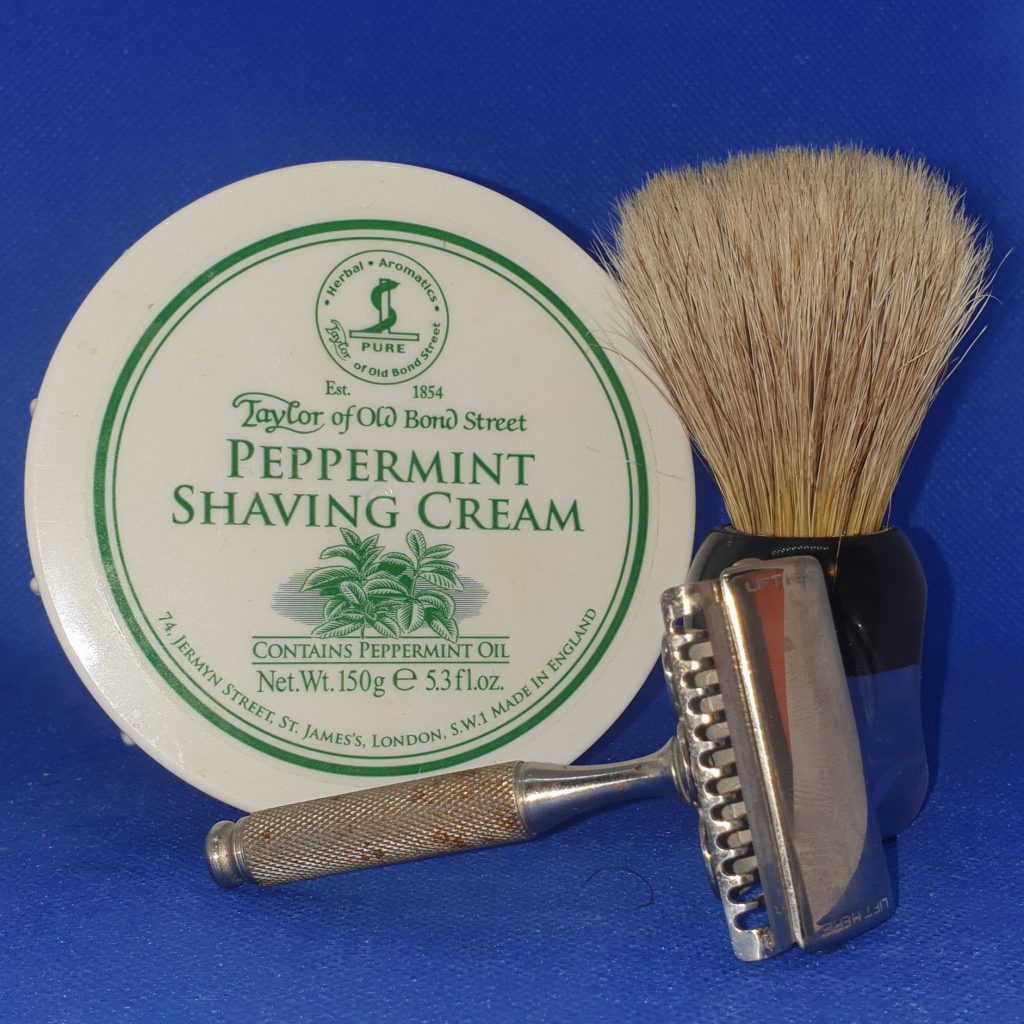
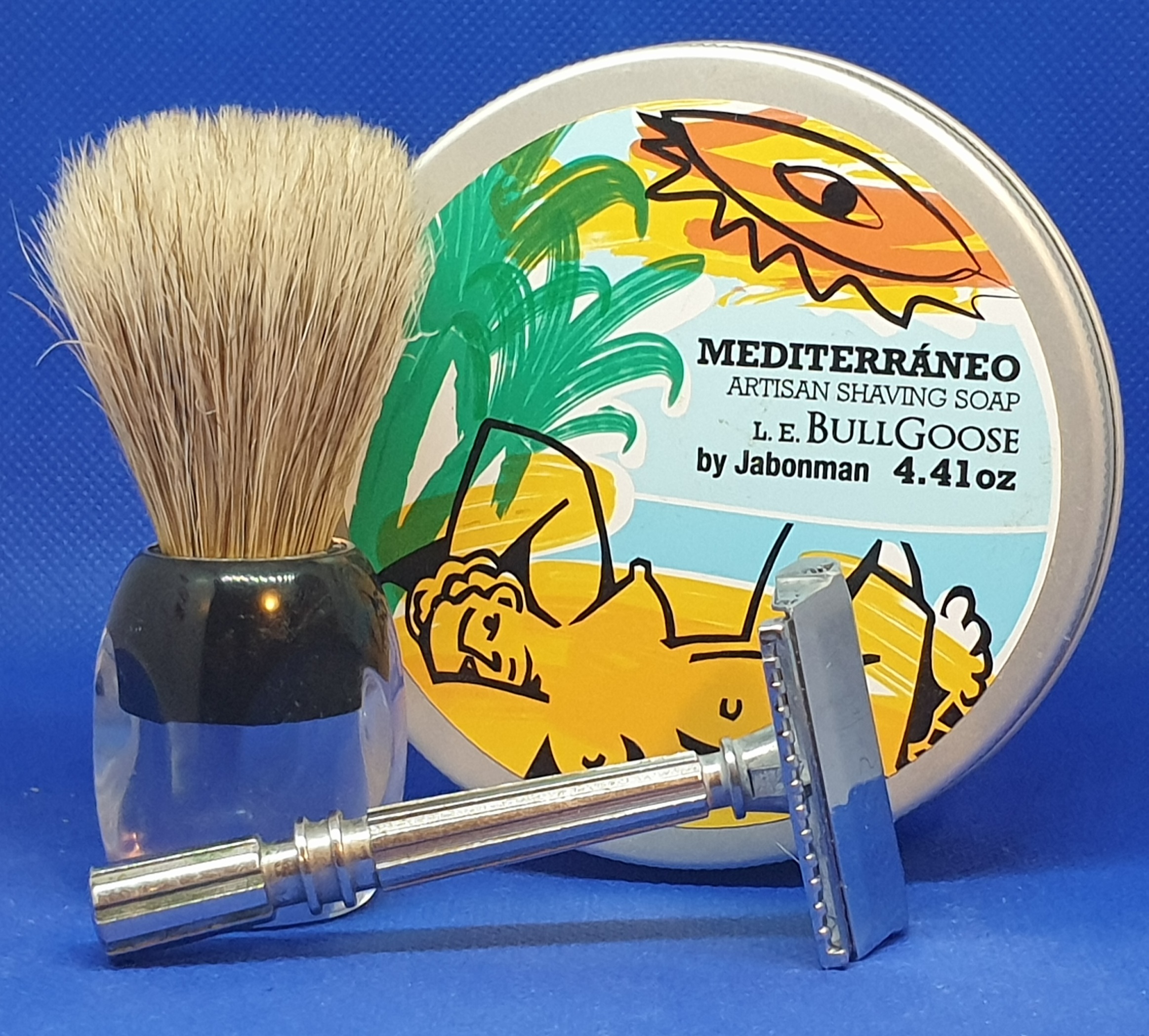
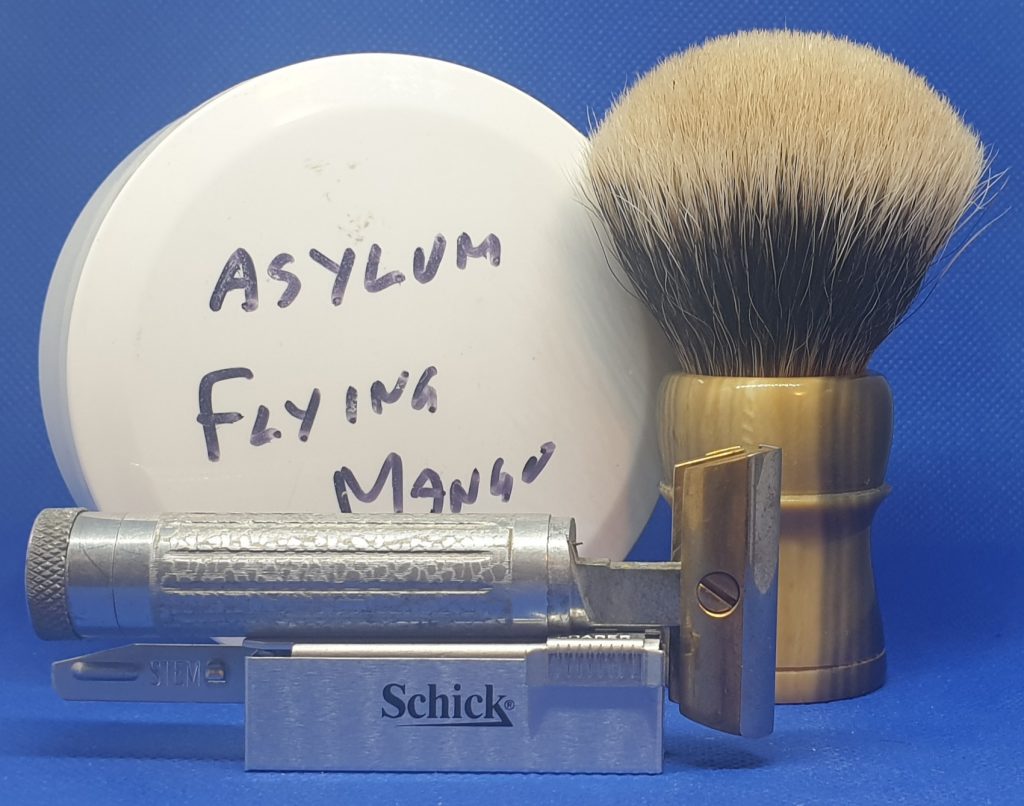
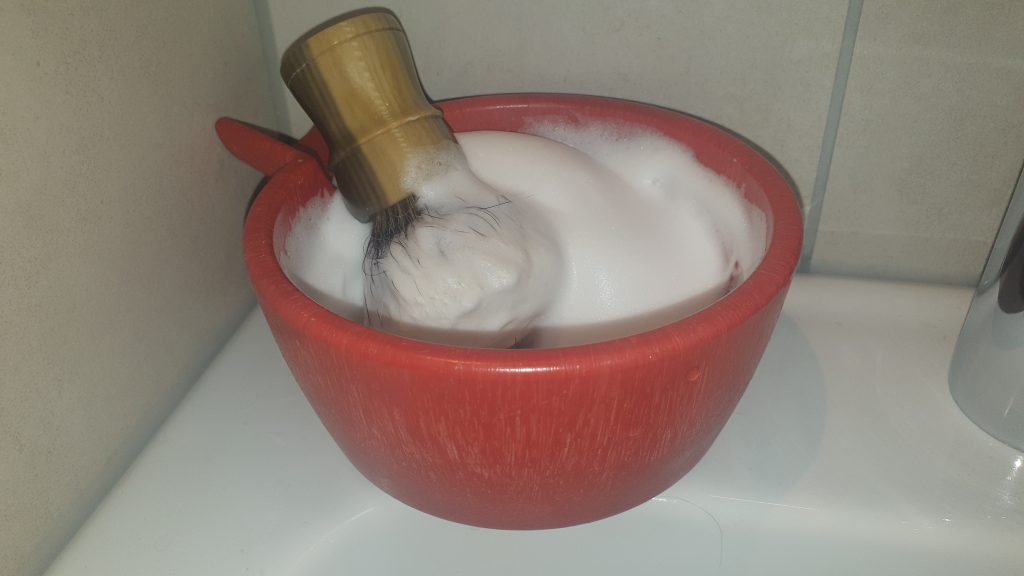
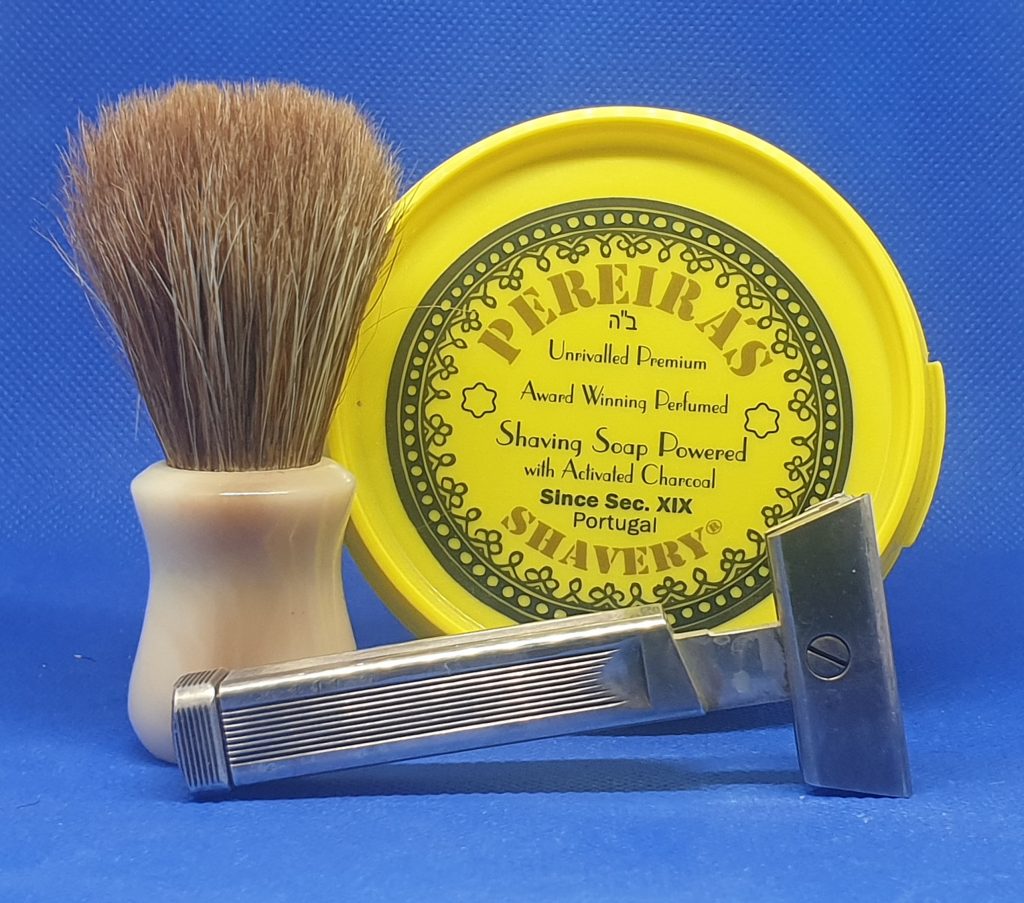
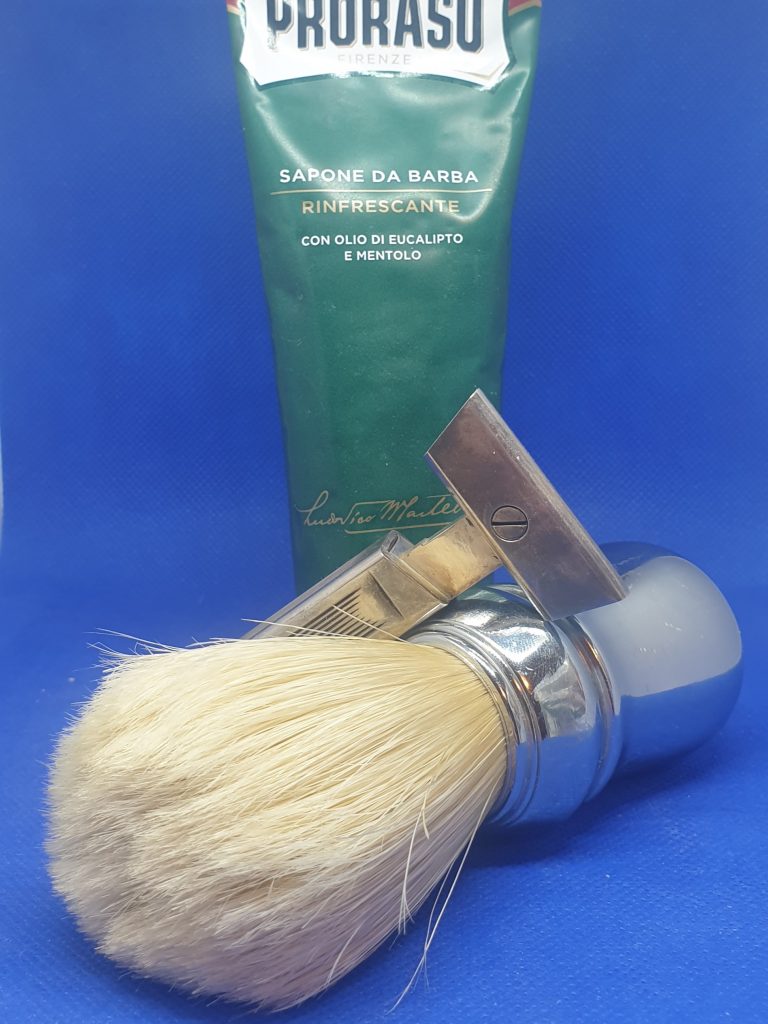
A shave and a warm shower is just the thing after shovelling snow for two hours…